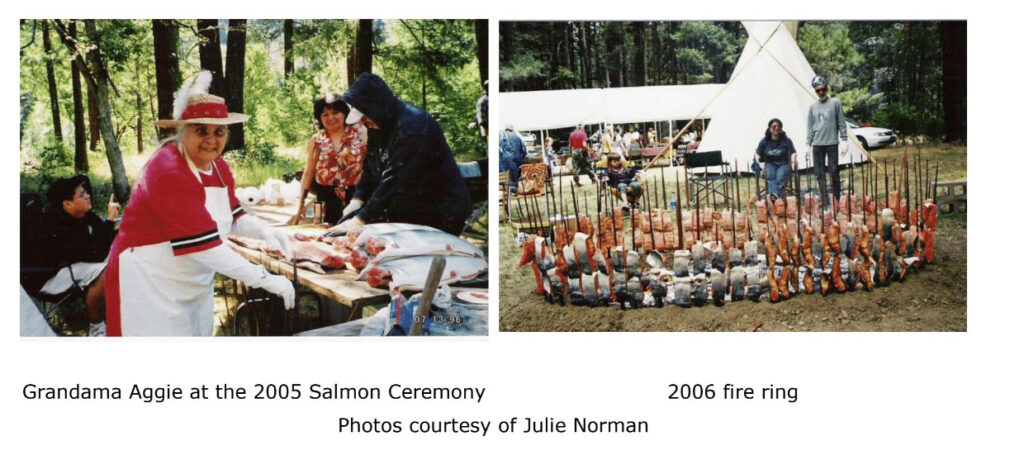Kanaka Gulch (which is sometimes erroneously called Kanaka Flat) is a quarter mile north on the dirt road you’ll find on your right just after crossing the Applegate River at Mile 14. It was named after the Native Hawaiians who mined the area in the 19th century. This is also where, in 1994, tribal elder Agnes Baker-Pilgrim – “Grandma Aggie” – reenacted the sacred Takelma Salmon Ceremony for the first time in 140 years.
The Takelma, Dakubetede and Shasta were the first inhabitants of the Applegate area, going back at least 10,000 years. European explorers brought smallpox; major outbreaks decimated the Native American populations in the 1780s and 1837-38. Miners flocked to the region after the discovery of gold. Settlers crossed the Oregon and Applegate Trails to grab land under the Donation Lands Claim Act. Conflicts ensued. At the end of the 1851-56 Rogue River Indian Wars, most surviving Native Americans in southwest Oregon Territory were removed to the Siletz, Grande Ronde and Klamath reservations.
Daldal, the Great Dragonfly, inaugurated the Salmon Ceremony to bring peace among the tribes, who were killing each other over fish. Celebrants eat the ceremonial first salmon of the year, placing the skin and bones in a fish-shaped wooden bowl. Purified divers return these remains to the riverbed to honor the salmon for giving its life to feed the people.
The Salmon Ceremony transitioned to its traditional hallowed site near Gold Hill in 2007. Grandma Aggie transitioned to her next journey in 2019.
 Learn more at:
Learn more at:
http://www.ctsi.nsn.us/chinook-indian-tribe-siletz-heritage/
https://www.nps.gov/orca/learn/historyculture/takelma-tribe.htm